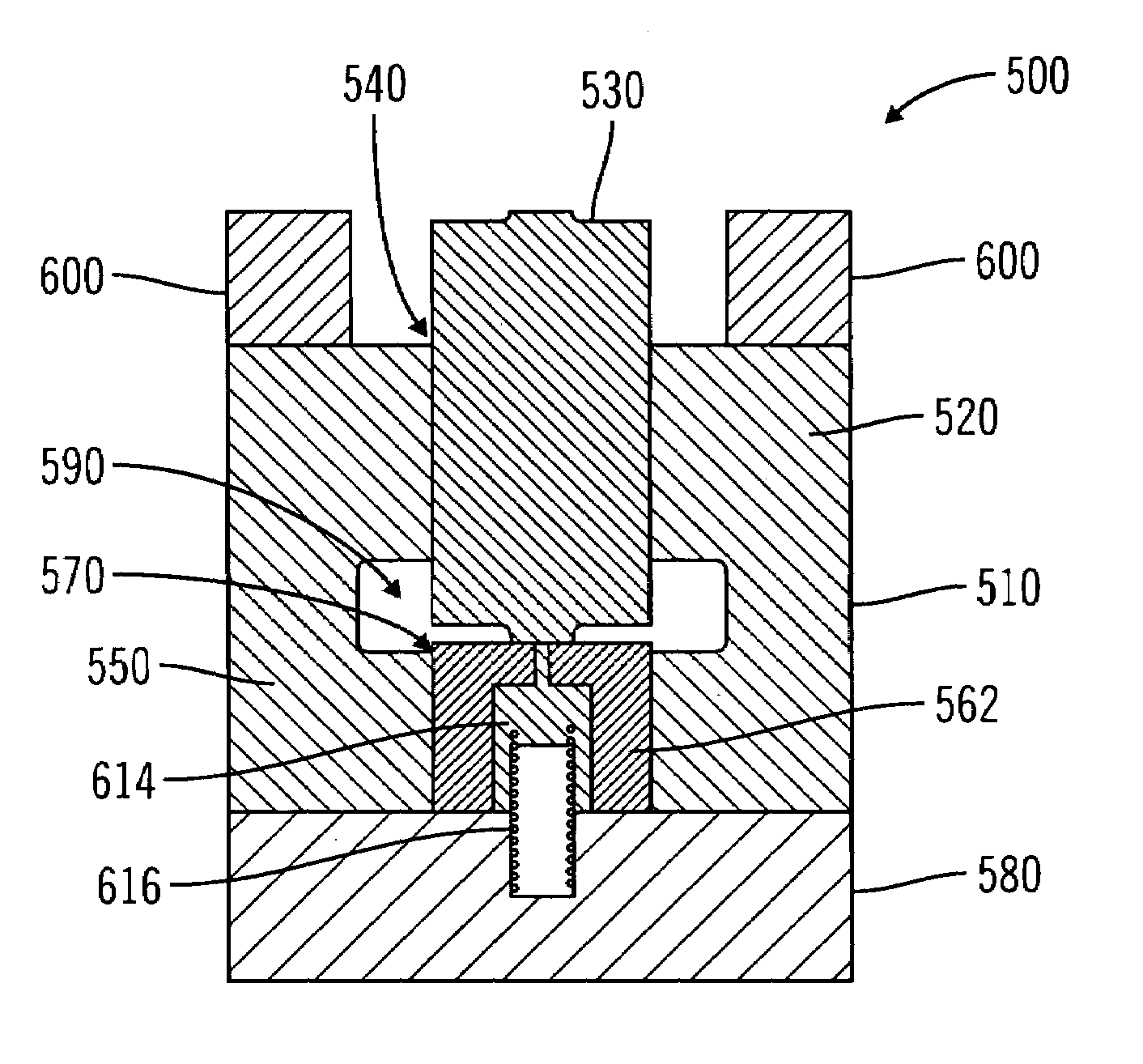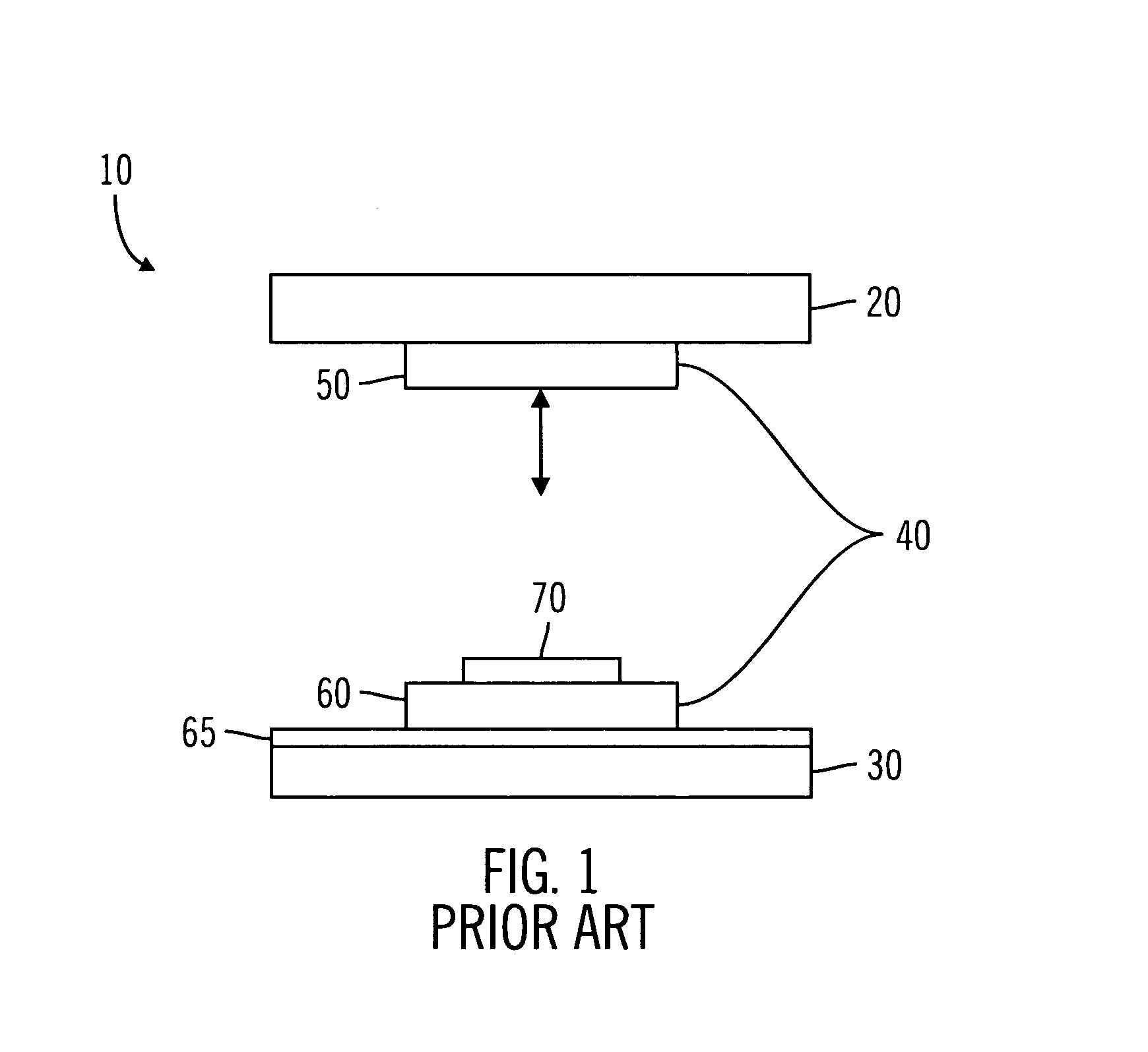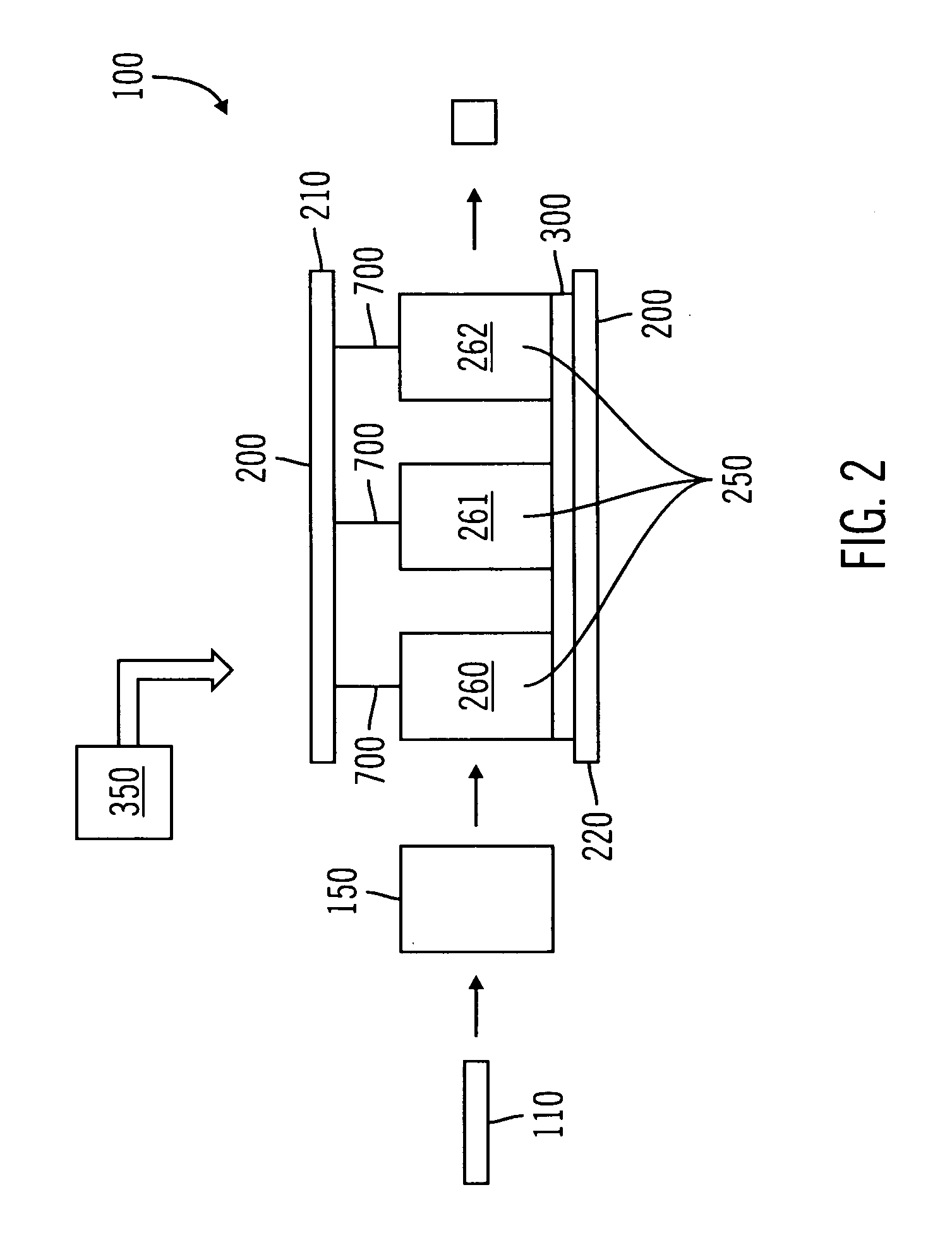Stamping system for manufacturing high tolerance parts
a stamping system and high tolerance technology, applied in forging presses, shaping tools, instruments, etc., can solve the problems of large number of components required in the deployment of fiber for these types of applications, sensitive to the cost of e-o-e terminal conversion devices and supporting circuitry, and the cost of both active and passive fiber components, so as to achieve tight tolerances and reduce the number of moving components
- Summary
- Abstract
- Description
- Claims
- Application Information
AI Technical Summary
Benefits of technology
Problems solved by technology
Method used
Image
Examples
first embodiment
Stamping Station—First Embodiment
[0058]FIG. 3a is a perspective view of a stamping station 400 in accordance with one embodiment of the present invention. FIG. 3b is a sectional view of the stamping station taken along line 3b-3b shown in FIG. 3a. The stamping station 400 includes structure for supporting the die set assembly and for directly guiding the punch to the die. The stamping station 400 includes a stationary punch holder plate 410, for supporting a punch 420, and a die holder plate 440, for supporting a die 450. The punch holder plate 410 functions to align and directly guide the punch 420 to the die 450. The punch holder plate 410 has a shaft 430 sized and shaped to slidably receive the punch 420 and to guide the punch 420 to the die 450. The shaft 430 allows the punch 420 to translate and penetrate through the punch holder plate 410, in slidable contact with the shaft 430. The shaft 430 aligns the punch 420 with the die 450, guiding the punch 420 to a work piece 455 and ...
second embodiment
Stamping Station—Second Embodiment
[0063]FIG. 4 is a perspective view of a stamping station 500 in accordance with another embodiment of the present invention. FIG. 5 is an assembly view of the stamping station 500 shown in FIG. 4. FIGS. 6a and 6b are sectional views of the stamping station 500 shown in FIG. 4, taken along lines 6a-6a and 6b-6b respectively. The stamping station 500 includes a stationary, monolithic die set assembly holder structure 510 for supporting the die set assembly. The die set holder 510 includes a punch holder section 520 for supporting and guiding a punch 530. The punch holder section 520 has a shaft 540 sized and shaped to slidably receive and support the punch 530. The shaft 540 is shown in FIG. 6. The shaft 540 allows the punch 530 to translate and penetrate through the die set holder 510. The punch 530 slides in contact within the shaft 540. The shaft 540 facilitates aligning the punch 530 relative to the die, guiding the punch 530 to a work piece 595 (...
third embodiment
Stamping Station—Third Embodiment
[0067]FIG. 8a is a schematic view of a stamping station 800 in accordance with another embodiment of the present invention. The stamping station 800 includes a die holder plate 850, for supporting a die 840, and a shaft 810 for supporting and guiding a punch 860 to the die 840. The shaft 810 is sized and shaped to slidably receive and support the punch 860, allowing the punch 860 to translate longitudinally through the shaft 810 towards and away from the die 840. The shaft 810 facilitates alignment of the punch 860 with the die 840, guiding the punch 860 to the die 840. Adjustable mechanical stoppers 880 are located in the stroke path of the punch 860 for limiting the translation of the punch 860 towards the die 840. The punch 860 is provided with a catch 830 which can engage the stoppers 880 to limit further translation of the punch 860 towards the die 840. A spacer 895 is provided for adjusting the position of the mechanical stoppers 880 relative t...
PUM
| Property | Measurement | Unit |
|---|---|---|
| surface roughness | aaaaa | aaaaa |
| surface roughness | aaaaa | aaaaa |
| diameter | aaaaa | aaaaa |
Abstract
Description
Claims
Application Information
 Login to View More
Login to View More - R&D
- Intellectual Property
- Life Sciences
- Materials
- Tech Scout
- Unparalleled Data Quality
- Higher Quality Content
- 60% Fewer Hallucinations
Browse by: Latest US Patents, China's latest patents, Technical Efficacy Thesaurus, Application Domain, Technology Topic, Popular Technical Reports.
© 2025 PatSnap. All rights reserved.Legal|Privacy policy|Modern Slavery Act Transparency Statement|Sitemap|About US| Contact US: help@patsnap.com



